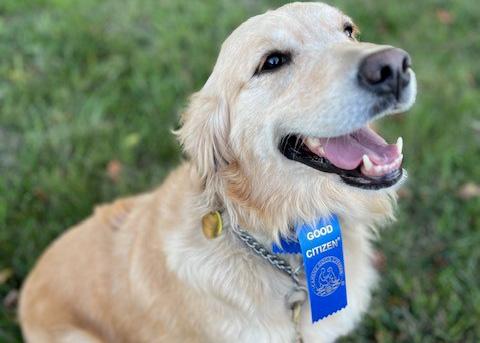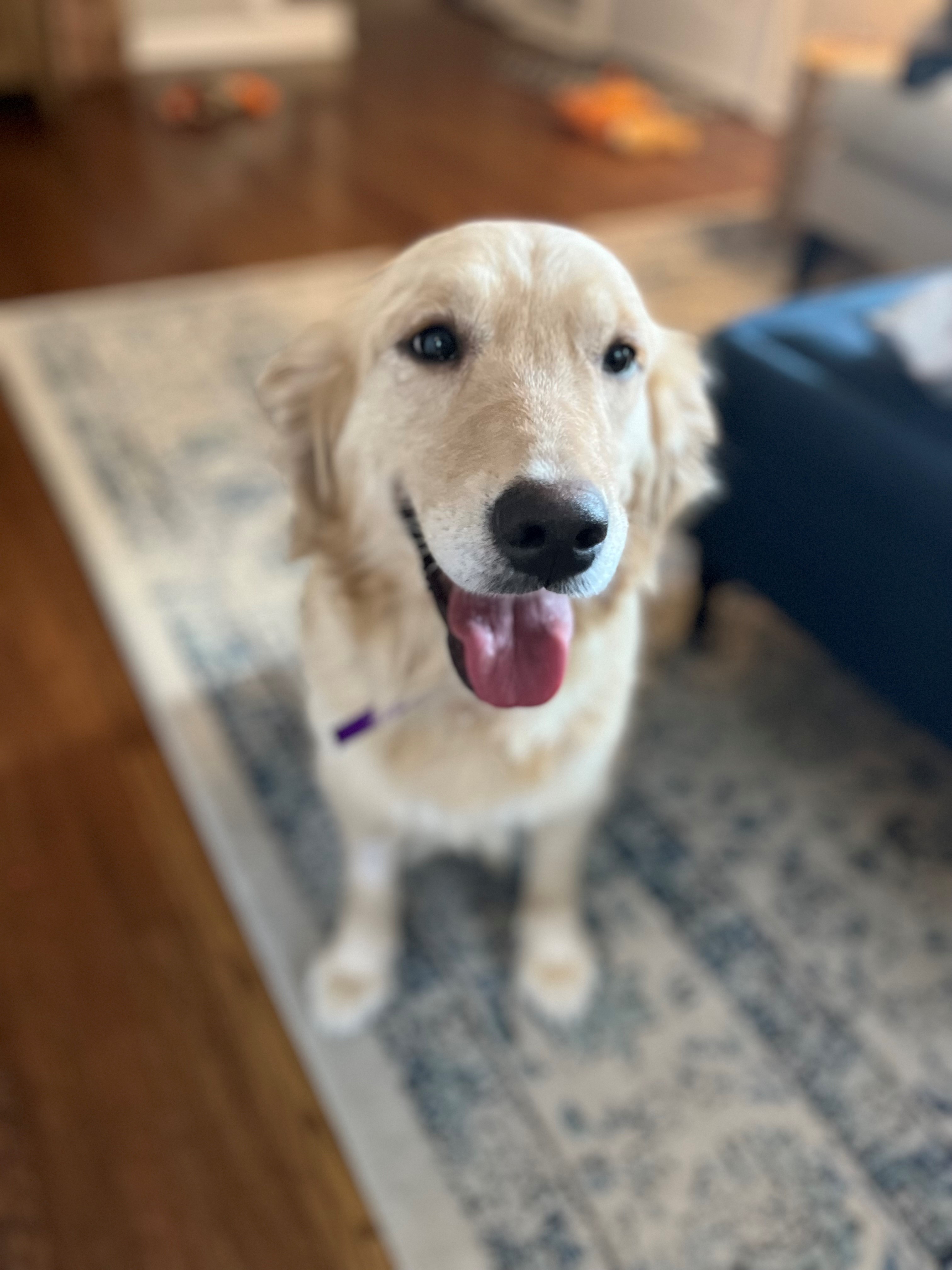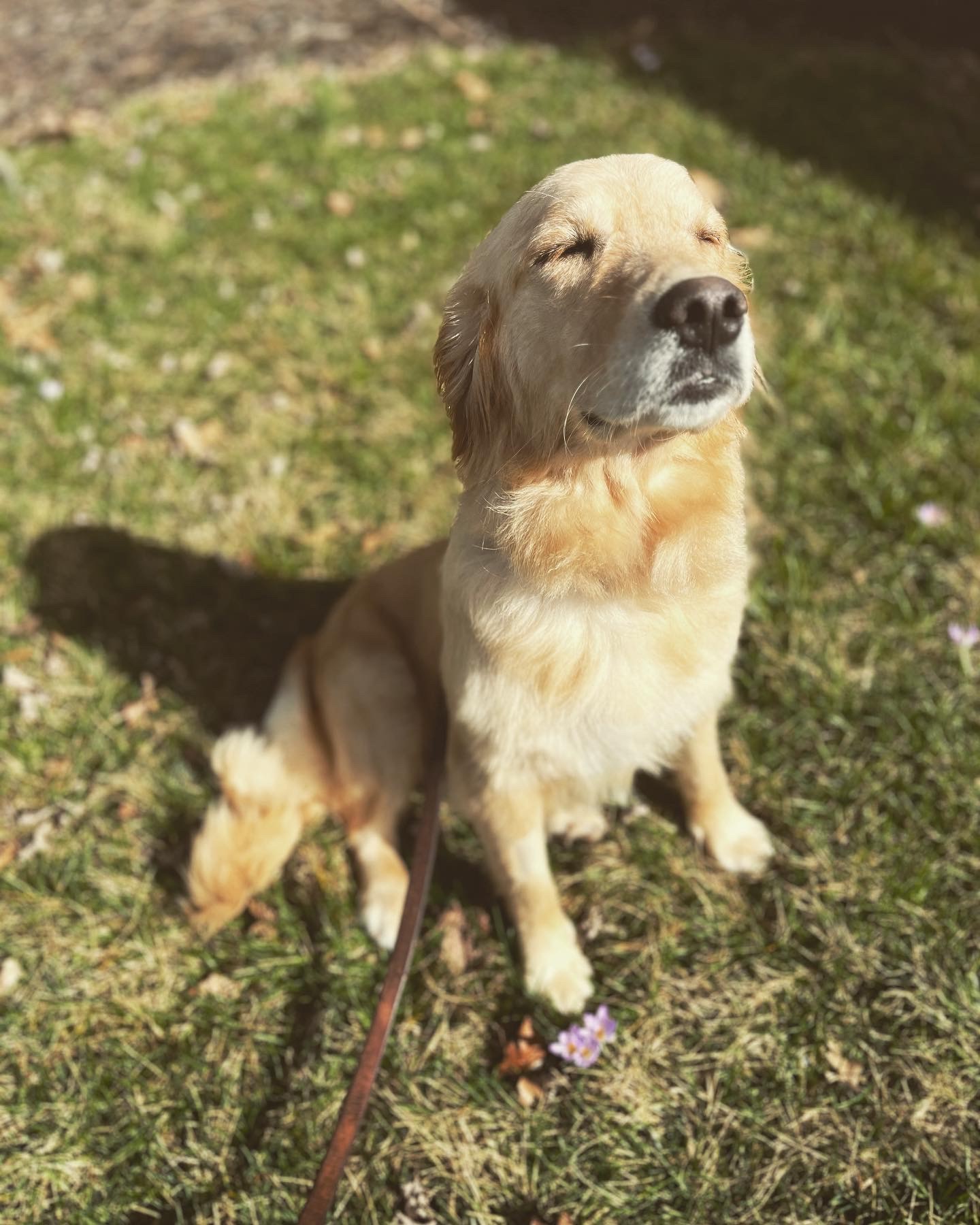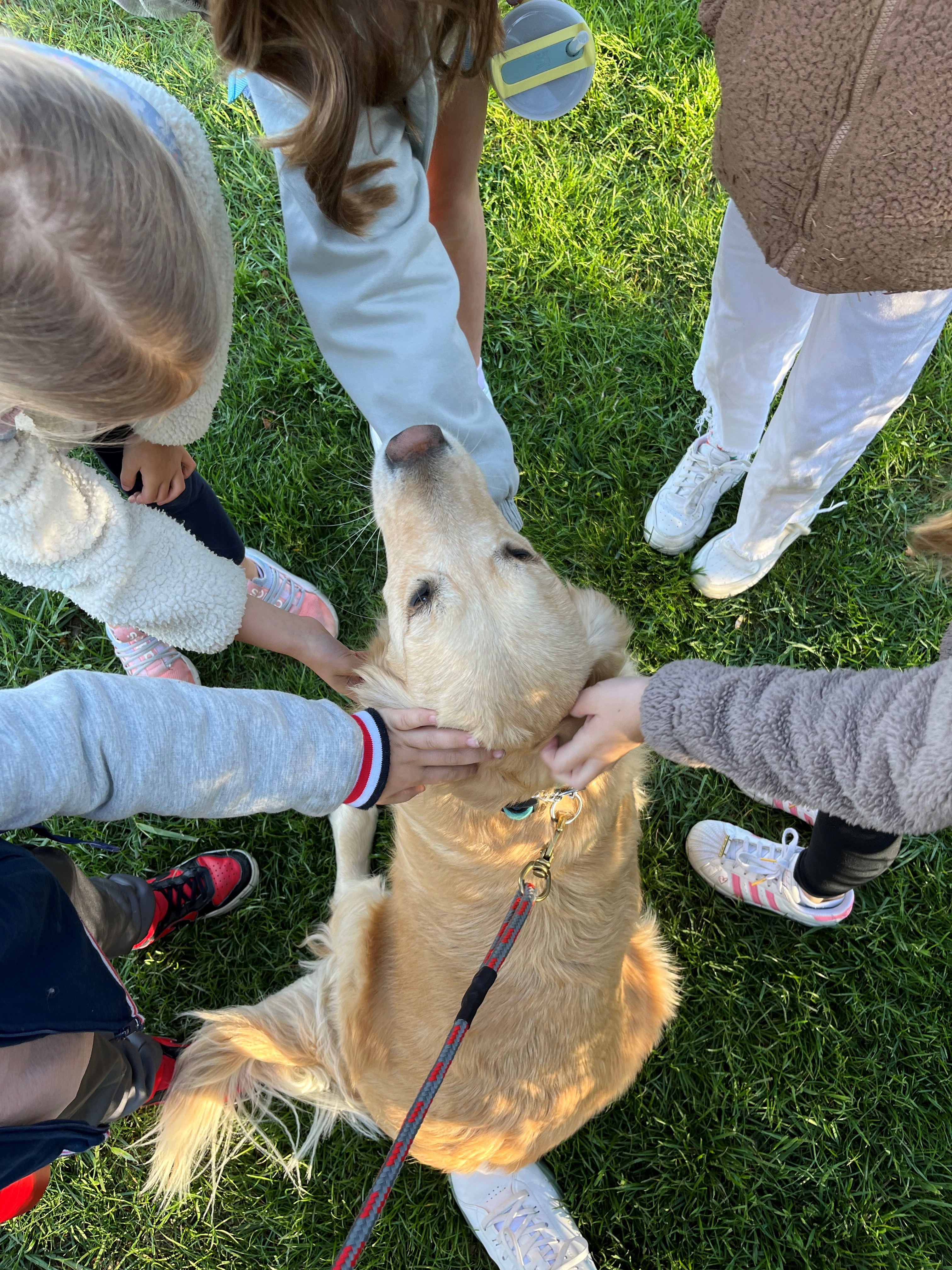Ryan Brownfield has dedicated his career to helping others. As the director of youth protection in The Ohio State University’s Office of Institutional Equity, he plays a key role in promoting safety and welfare in youth programs that serve hundreds of thousands each year. Recently, while completing a long-deferred master’s degree in public policy administration at Ohio State, Ryan’s passion for supporting others grew even stronger with the addition of Mabel, a golden retriever rescue dog. Mabel, whose resilience and gentle spirit made her a natural fit for therapy work, underwent extensive training to become a Buckeye Paws certified therapy dog. Ryan and Mabel both graduated in the autumn of 2024 — Ryan with his master’s degree and Mabel with her certification — symbolizing their shared dedication to growth and the power of second chances.
Tell us about your career journey and your time at Ohio State.
Growing up just off Lane Avenue in Columbus, I’ve been a Buckeye as long as I can remember. I started working in student services at Ohio State’s College of Education and Human Ecology in 2009 and soon after began my MA. Shortly after that, when former Columbus City Councilwoman Cindy Lazarus called and offered me the chance to help open Flying Horse Farms, a camp for children with serious illnesses, I couldn’t turn it down. The role of camp director was all-consuming those first few years, so I put my MA on hold. Since then, my wife earned her PhD, we started a family, and my MA seemed out of reach. I later served as the chief operating officer of the Boys and Girls Clubs of Central Ohio before eventually rejoining the university as director of youth protection in 2020.
What is your role as director of youth protection?
I oversee support for Ohio State's youth programs. My role involves providing training on child abuse and neglect, supporting background check processes, and implementing other risk management practices to ensure the safety of our youngest Buckeyes.
You were finally able to complete your MA at Ohio State. What degree did you earn, and how was your experience returning to school after many years?
I completed my MA in public policy administration at Ohio State’s John Glenn College of Public Affairs in autumn 2024. My work has been very fulfilling through the years, but it had always been a source of regret that this degree was left uncompleted. I found that returning to the program after 10 years in nonprofit leadership gave me a fresh outlook, and the coursework was much more practical and experiential. I have more gray hairs now, but I also have much more perspective on the challenges and how to approach them.
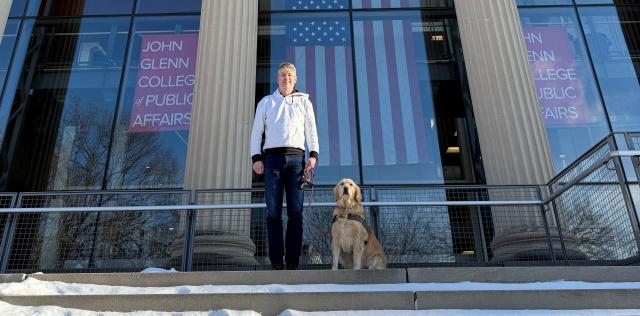
How did you come to have Mabel?
My last dog, Molly, lived to nearly 16, and I was devastated when it was time to say goodbye. It took me about a year to be ready for a new dog, and during that time, I followed the story of 19 golden retrievers rescued from a terrible situation in New Albany, Ohio. Most had never been outside and didn’t have names, collars or much of anything dogs need to thrive.
Then, one morning, while scrolling through Columbus Humane’s website, I saw a picture of Mabel and immediately knew she was special. Even though they didn’t open until 2 p.m., I took the day off and arrived at 8 a.m., bundled up against the coldest weather of the year. A volunteer was confused by my early arrival, but when I explained, the CEO took pity on me and said my spot in line would be saved. As I turned to leave, I saw Mabel on her morning walk. I learned she had recently weaned a litter of puppies, and her calm, loving nature confirmed my suspicions. I returned hours later to find a line of people waiting to meet her, but my spot was saved. As soon as they opened, we began the adoption process, and that afternoon, Mabel was home.
What inspired you to get involved with Buckeye Paws, and how did you decide it would be a good fit for you and Mabel?
I felt guilty about getting such a wonderful dog when others also wanted her, and Mabel’s gentle, friendly temperament made me want to share her. But she was a long way from being trained, wasn’t housebroken, didn’t know any commands and had experienced a lot of trauma. She was also eager to please, and we quickly formed a strong bond. At first, I simply wanted to share her with others, but as I saw how much she thrived in a therapeutic setting, it became clear that the experience was just as beneficial for her as it was for me and others.
What has the training process been like with Mabel, and how do you think her certification will benefit the community?
Mabel’s certification journey took over a year. We started basic training with the Buckeye Paws master trainer, which was as much about me learning to be a good handler as it was about training Mabel. After that, we completed AKC Good Citizen, First Response Canine, and the challenging Alliance of Therapy Dog Certification, which included observations in a medical setting (a senior memory care facility in our case). And, not to give Mabel a big head, but the tester said she had never seen a dog perform so well on her first try in a medical setting.
Seeing Mabel’s impact has been incredible. She’s helped students who struggled with difficult conversations, especially when dealing with life changes or roommate challenges. Having her in the room made those conversations easier and allowed the students to communicate more clearly. During finals week, she comforted pharmacy students before their exams, with many sharing how calmer they felt afterward. It’s incredible how much she can do in just a few minutes.
What have been some memorable moments or experiences with Mabel throughout this journey that stand out to you?
The early moments with Mabel stand out the most. In those first few days, it became clear how much trauma she’d endured. I was told she’d never been outside before her rescue, and when she discovered my fenced-in backyard, she didn’t want to come in. She’d find a sunny spot and stay there for hours — whether on grass or dirt, she found simple joys. When she’d whine or nose the back door, it was always to ask me to come out, not to come in.
One comment from the dog walker at Columbus Humane has stuck with me. She said Mabel was the best mom her litter of pups could have had, even though the vet staff thought she was only 1 to 1 1/2 years old. It speaks to her nature — whether with people or pups, she wants to care for everyone. She has been through so much but is incredibly happy and resilient. She really is inspiring.
How do your academic accomplishments and Mabel’s certification contribute to your professional work?
My MA in public policy administration has given me a deeper understanding of the systems and policies I work with, allowing me to approach my role with more perspective and a practical mindset. Mabel helps humanize me to others and may make otherwise challenging conversations and interactions more personal. Hopefully, this leads to better outcomes and, ultimately, an environment where the youth programs and young people I serve are better protected and cared for.
If you had to choose one lesson from these two experiences — your master’s degree and training Mabel — what would it be?
Resilience might be the most important trait any being can have. If Mabel can overcome such a difficult start and become the loving dog she is now, it reminds me that even the most daunting challenges — like returning after many years to complete my master’s degree, no matter how overwhelming it felt while balancing career, family and volunteer work — are possible. Second chances are real.
